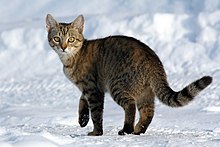User:Cayley P/sandbox
Paragraph: Set the style of your text. For example, make a header or plain paragraph text. You can also use it to offset block quotes.
A : Highlight your text, then click here to format it with bold, italics, etc. The “More” options allows you to underline (U), cross-out text (S), add code snippets ( { } ), change language keyboards (Aあ), and clear all formatting ().
Links: Highlight text and push this button to make it a link. The Visual Editor will automatically suggest related Wikipedia articles for that word or phrase. This is a great way to connect your article to more Wikipedia content. You only have to link important words once, usually during the first time they appear. If you want to link to pages outside of Wikipedia (for an “external links” section, for example) click on the “External link” tab.
Cite: The citation tool in the Visual Editor helps format your citations. You can simply paste a DOI or URL, and the Visual Editor will try to sort out all of the fields you need. Be sure to review it, however, and apply missing fields manually (if you know them). You can also add books, journals, news, and websites manually. That opens up a quick guide for inputting your citations. Once you've added a source, you can click the “re-use” tab to cite it again.
- Bullets: To add bullet points or a numbered list, click here.

Insert: This tab lets you add media, images, or tables.
Ω: This tab allows you to add special characters, such as those found in non-English words, scientific notation, and a handful of language extensions. ÁáÀàÂâÄ
Adding to an article exercise- Possible additions to cancer paragraph
My additions
COX- 2 appears to be related to cancers and abnormal growths in the intestinal tract. Overexpression of COX-2 produces excess prostaglandin E2, which has been shown to increase the possibility of colorectal cancer.[2] COX inhibitors have been shown to reduce the occurrence of cancers and pre-cancerous growths. The National Cancer Institute has done some studies on COX-2 and cancer. The FDA has approved Celebrex for treatment of familial adenomatous polyposis (FAP). COX-2 inhibitors are currently being studied in breast cancer and appear to be beneficial. (Current paragraph on page)
Reference Section[edit]
- ^ "COX-2 Protein Overview".
- ^ Greenhough, A.; Smartt, H. J.M.; Moore, A. E.; Roberts, H. R.; Williams, A. C.; Paraskeva, C.; Kaidi, A. (2009-01-09). "The COX-2/PGE2 pathway: key roles in the hallmarks of cancer and adaptation to the tumour microenvironment". Carcinogenesis. 30 (3): 377–386. doi:10.1093/carcin/bgp014. ISSN 0143-3334.
Lipfert, Peter; Seitz, Ruediger; Arndt, Joachim O. (1987). "Studies of Local Anesthetic Action on Natural Spike Activity in the Aortic Nerve of Cats". Anesthesiology. Ovid Technologies (Wolters Kluwer Health). 66 (2): 210–213. doi:10.1097/00000542-198702000-00016. ISSN 0003-3022. PMID 3813081. Non-steroidal anti-inflammatory drugs (NSAIDs) are the competitive inhibitors of cyclooxygenase (COX), the enzyme which mediates the bioconversion of arachidonic acid to inflammatory prostaglandins (PGs).
Cyclooxygenases: structural and functional insights (nih.gov)[1]
COX-2 Inhibitor 2[2]
 | This is a user sandbox of Cayley P. You can use it for testing or practicing edits. This is not the sandbox where you should draft your assigned article for a dashboard.wikiedu.org course. To find the right sandbox for your assignment, visit your Dashboard course page and follow the Sandbox Draft link for your assigned article in the My Articles section. |
- ^ Rouzer, Carol A.; Marnett, Lawrence J. (2009-4). "Cyclooxygenases: structural and functional insights". Journal of Lipid Research. 50 (Suppl): S29–S34. doi:10.1194/jlr.R800042-JLR200. ISSN 0022-2275. PMC 2674713. PMID 18952571.
{{cite journal}}: Check date values in:|date=(help)CS1 maint: unflagged free DOI (link) - ^ PubChem. "COX-2 Inhibitor II". pubchem.ncbi.nlm.nih.gov. Retrieved 2022-03-12.
